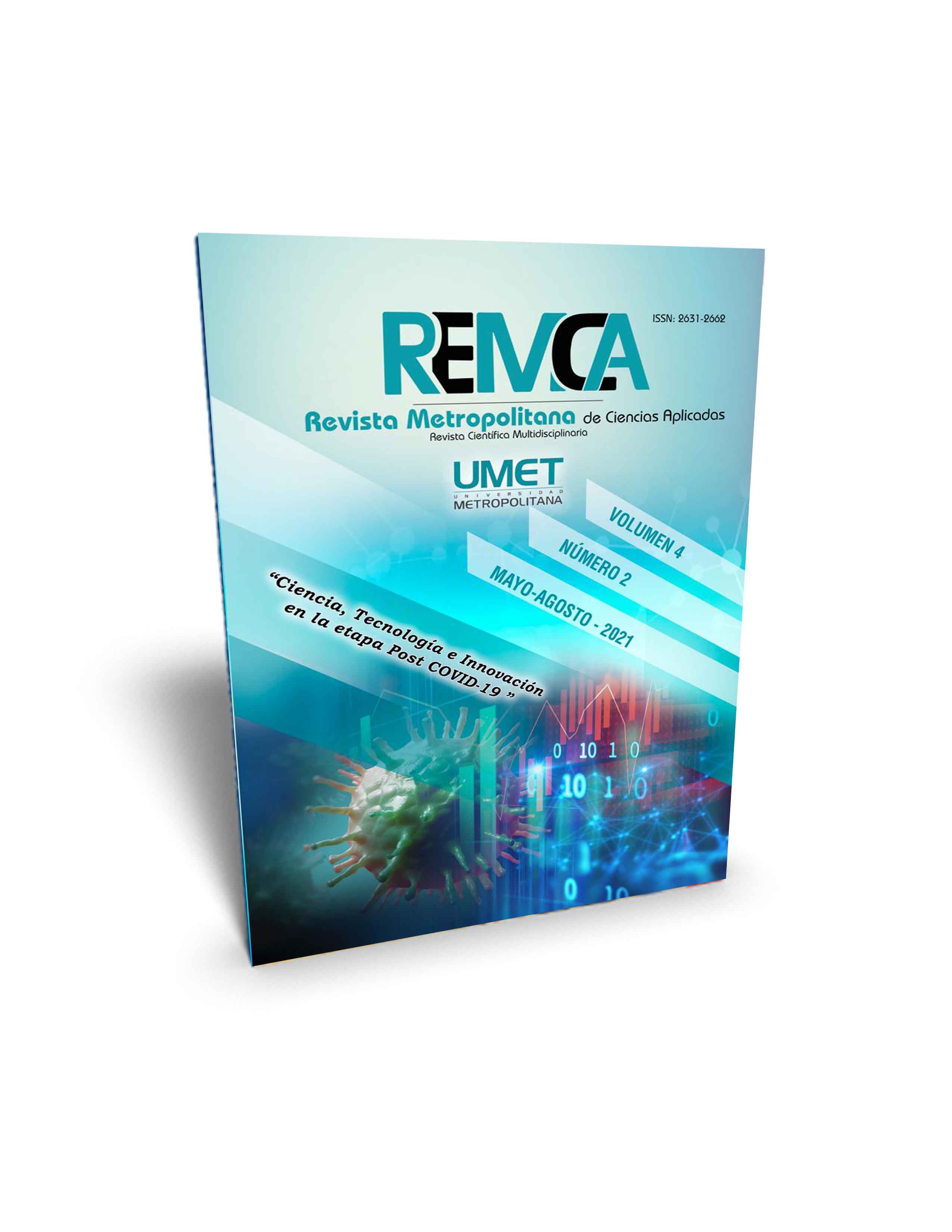The effect of teleworking on employment in Ecuador during the 2019-2020 health crisis
DOI:
https://doi.org/10.62452/pashzc96Keywords:
Telework, COVID-19, employment, Ecuadorian labor lawAbstract
This article offers a preliminary result of the effect of teleworking in the Ecuadorian labor market in the framework of the period between December 2019 and December 2020. Various sources of official information were used to define state action; the employment levels were extracted from the Bulletin of labor indicators published in December, 2020 of the Encuesta Nacional de Empleo, Desempleo, y Subempleo (ENEMDU) by Instituto Nacional de Estadística y Censos (INEC). The journalistic and bibliographic information was contrasted, compared, and strictly interpreted using heuristic matrices. Employment forecasts were obtained by exponential smoothing, and the net effect of teleworking on the Ecuadorian labor market in the taken reference period, by diff-in-diff. The data were processed in Microsoft Excel. The analysis concludes that teleworking had an important (~ 10%), although decreasing, effect on the reactivation of the Ecuadorian labor market affected by the health crisis due to COVID-19.
Downloads
References
Brockwell, P. J., & Davis, R. A. (2016). Introduction to Time Series and Forecasting. Springer.
Cárdenas, L., Romero, G., Arredondo, M., & Garzón, J. (2006). El teletrabajo como una oportunidad en el desarrollo de la industria de las TICs, análisis legal. Protección Real en el Entorno Digital. https://prosoft.economia.gob.mx/Imagenes/ImagenesMaster/Estudios%20Prosoft/Resumen%20Ejecutivo%20espanol%20ingles%20FREF_30.pdf
Castell, M. (2015). La Era de la Información. Economía Sociedad y Cultura. Alianza.
Ecuador. Asamblea Nacional Constituyente. (2008). Constitución Política de la República del Ecuador 2008. Decreto legislativo 0. Registro oficial 449. https://corporativo.cnt.gob.ec/wp-content/uploads/2015/05/Constitucion_Republica_del_Ecuador_2008_RO.pdf
Ecuador. Congreso Nacional. (2005). Código del Trabajo. Registro Oficial 167. http://macco.ec/wp-content/uploads/2020/02/5-Codigo-del-Trabajo.pdf
Ecuador. Instituto Nacional de Estadística y Censos. (2020a). Boletín Técnico No. 02-2020-ENEMDU. Encuesta Nacional de Empleo, Desempleo, y Subempleo. INEC. https://www.ecuadorencifras.gob.ec/documentos/web-inec/EMPLEO/2020/Septiembre-2020/Boletin%20tecnico%20de%20empleo%20enemdu%20sep20_final.pdf
Ecuador. Instituto Nacional de Estadística y Censos. (2020b). Encuesta Nacional de Empleo, Desempleo, y Subempleo (ENEMDU). Indicadores Laborales Diciembre. INEC. https://www.ecuadorencifras.gob.ec/documentos/web-inec/EMPLEO/2020/Diciembre-2020/202012_Mercado_Laboral.pdf
Ecuador. Ministerio del Trabajo. (2020). Acuerdos Ministeriales. https://www.trabajo.gob.ec/wp-content/uploads/2020/03/ACUERDO-MDT-2020-076-TELETRABAJO.pdf?x42051
Ecuador. Secretaría General de Comunicación de la Presidencia. (2020). El presidente Lenín Moreno decreta Estado de Excepción para evitar la propagación del COVID-19. https://www.comunicacion.gob.ec/el-presidente-lenin-moreno-decreta-estado-de-excepcion-para-evitar-la-propagacion-del-covid-19/
El Telégrafo. (2016). En Ecuador, 15.200 personas aplican el teletrabajo. El Telégrafo. https://www.eltelegrafo.com.ec/noticias/economia/8/en-ecuador-15-200-personas-aplican-el-teletrabajo
Fabara Abogados. (2020). Aspectos laborales y de seguridad social de la Ley de Apoyo Humanitario. https://fabara.ec/blog-es/aspectos-laborales-y-de-seguridad-social-de-la-ley-de-apoyo-humanitario/
Jaramillo, H. (2014). El Teletrabajo: Los beneficios de una forma de organización laboral moderna. Universidad Militar Nueva Granada.
Morgan, S. L., & Winship, C. (2015). Counterfactuals and Causal Inference. Methods and Principles for Social Research. Cambridge University Press.
Ortíz Chaparro, F. (1996). El teletrabajo: una nueva sociedad laboral en la era de la tecnología. McGraw-Hill.
Pereira, M. (2013). La reforma del mercado de trabajo. Sistema.
Pérez Sánchez, C., & Gálvez Mozo, A. M. (2009). Teletrabajo y vida cotidiana: Ventajas y dificultades para la conciliación de la vida laboral, personal y familiar. Athenea Digital, (15), 57-79.
Revista Líderes. (2016). Teletrabajo es una opción con flexibilidad. Revista LÍDERES. https://www.revistalideres.ec/lideres/teletrabajo-casa-empresa-ecuador-beneficios.html
Rosenbaum, P. R. (2017). Observation and Experiment. An introduction to causal inference. Harvard University Press.
Downloads
Published
Issue
Section
License
Copyright (c) 2021 José Luis Barrionuevo Núñez (Autor/a)

This work is licensed under a Creative Commons Attribution-NonCommercial-ShareAlike 4.0 International License.
Authors who publish in Revista Metropolitana de Ciencias Aplicadas (REMCA), agree to the following terms:
1. Copyright
Authors retain unrestricted copyright to their work. Authors grant the journal the right of first publication. To this end, they assign the journal non-exclusive exploitation rights (reproduction, distribution, public communication, and transformation). Authors may enter into additional agreements for the non-exclusive distribution of the version of the work published in the journal, provided that acknowledgment of its initial publication in this journal is given.
© The authors.
2. License
The articles are published in the journal under the Creative Commons Attribution-NonCommercial-ShareAlike 4.0 International License (CC BY-NC-SA 4.0). The terms can be found at: https://creativecommons.org/licenses/by-nc-sa/4.0/deed.en
This license allows:
- Sharing: Copying and redistributing the material in any medium or format.
- Adapting: Remixing, transforming, and building upon the material.
Under the following terms:
- Attribution: You must give appropriate credit, provide a link to the license, and indicate if any changes were made. You may do this in any reasonable manner, but not in any way that suggests the licensor endorses or sponsors your use.
- NonCommercial: You may not use the material for commercial purposes.
- ShareAlike: If you remix, transform, or build upon the material, you must distribute your creation under the same license as the original work.
There are no additional restrictions. You may not apply legal terms or technological measures that legally restrict others from doing anything the license permits.




